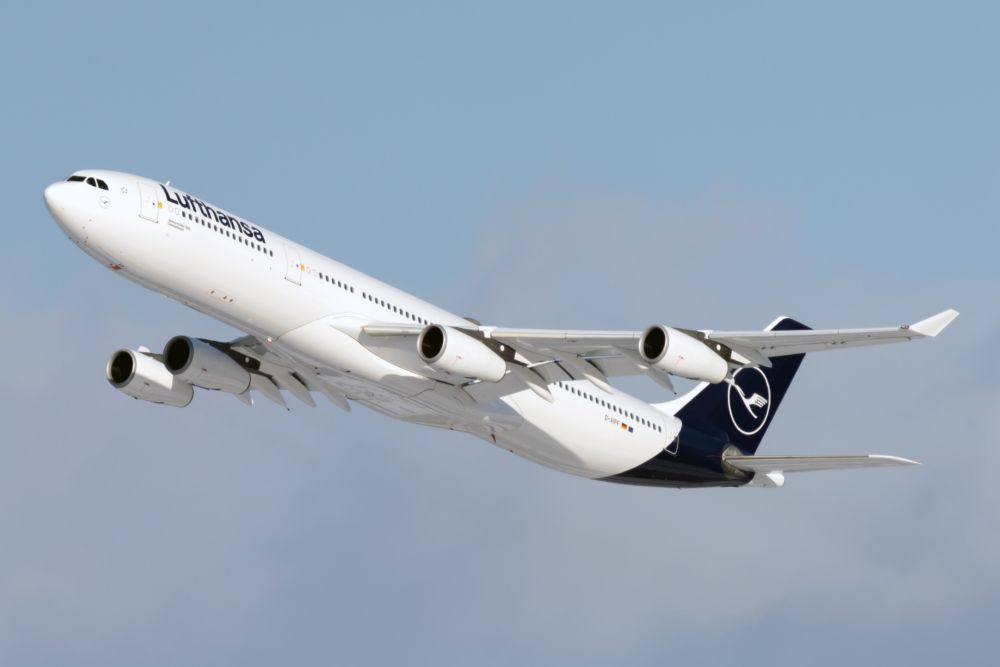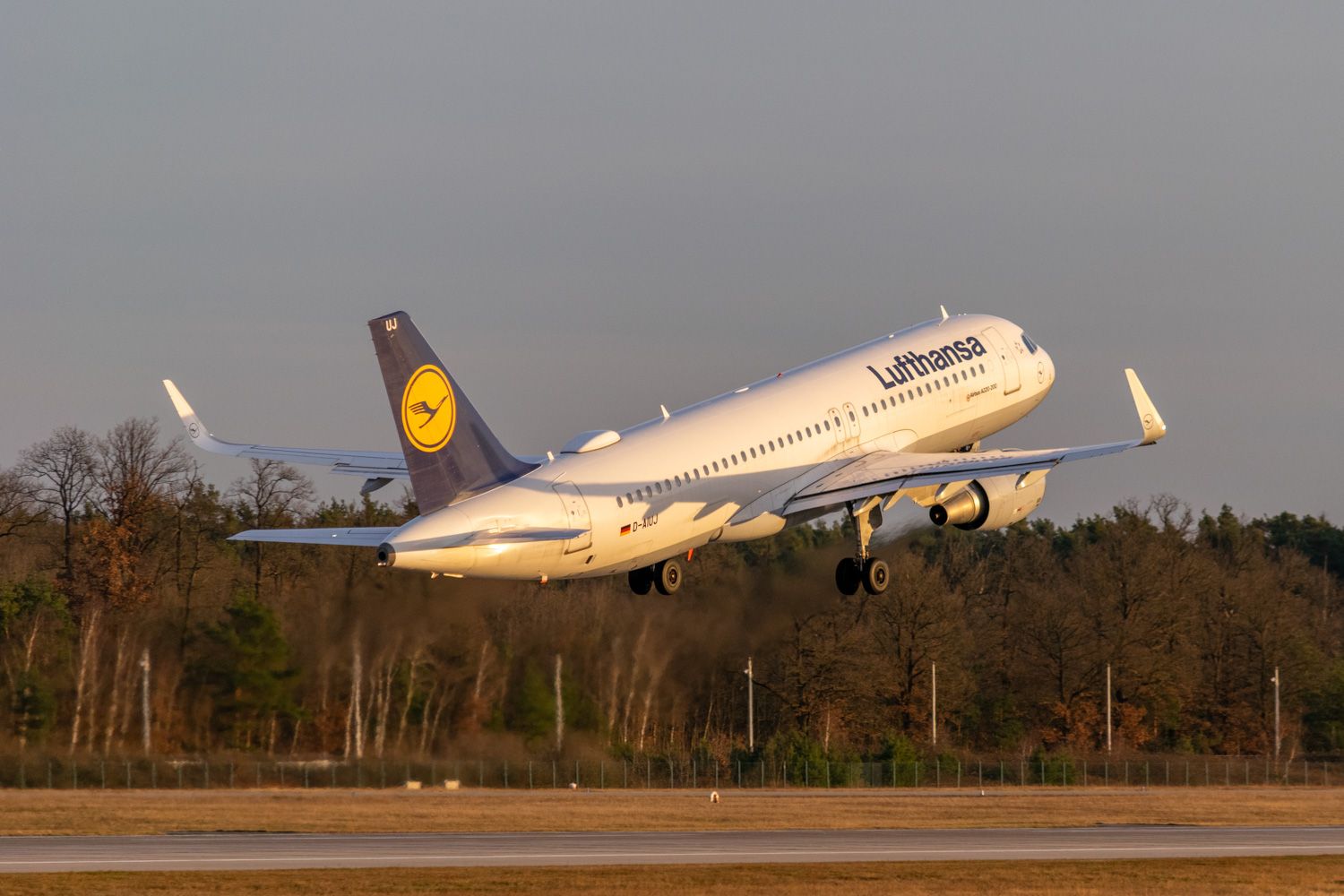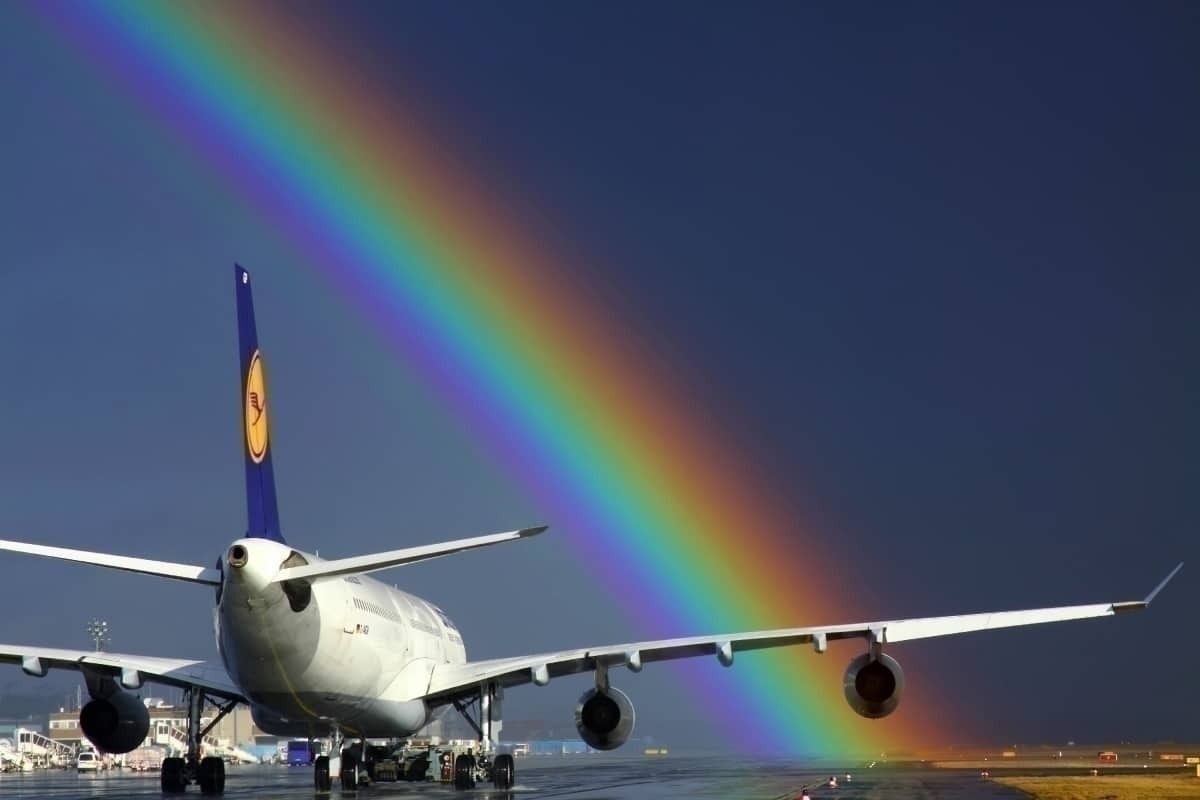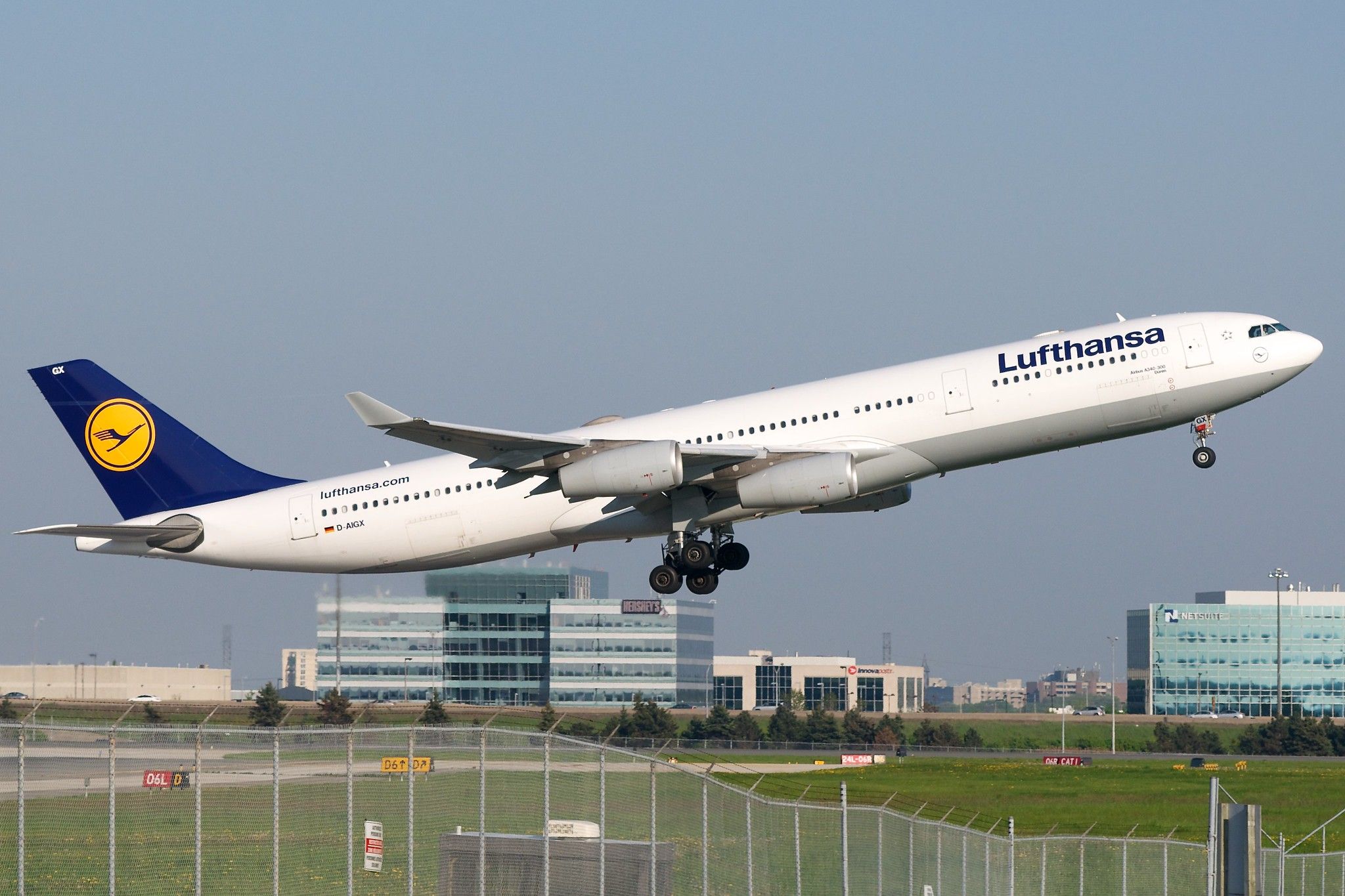While the four-engine Airbus A340 is becoming an increasingly rare sight in the skies and at the world's airports, Lufthansa remains a fairly large operator of the type. Indeed, both the A340-300 and -600 variants serve the German flag carrier, although they are among its oldest aircraft. Here's a guide to its A340-300 fleet.
Some can seat 300 passengers
According to ch-aviation.com, Lufthansa's A340-300s have two different configurations, with the highest-capacity layout having space for 300 seats. This higher-density setup strongly focuses on economy class, with 87% of its overall seating capacity dedicated to accommodating those paying the lowest fares.
This section of the cabin features a total of 261 seats, which are primarily laid out eight-abreast in a 2-4-2 configuration. However, as the aircraft's fuselage narrows towards the plane's rear, this reduces to seven-abreast (2-3-2). Each of these seats features a seatback entertainment screen, and their pitch is 32 inches.
Moving forward in the cabin, 7% of the aircraft's seats can be found in the three-row, 21-seat premium economy section. These seven-abreast recliners offer a more spacious experience, with a 38/39-inch pitch. Finally, the aircraft's 18 most luxurious seats are its three six-abreast rows of business class flatbeds. One negative aspect is that the window seats in this 2-2-2 cabin don't feature direct aisle access.
Stay informed: Sign up for our daily and weekly aviation news digests.
Lower-density layouts
On some long-haul routes, Lufthansa will need a greater proportion of premium seating than others. For this reason, its second A340-300 seating configuration features larger premium economy and business class cabins. Seating 279 people in total, a lower proportion of 79% (221 seats) of the cabin is dedicated to economy.
Meanwhile, the aircraft's premium economy cabin in this configuration is a third larger, with an extra row of seating bringing its capacity to 28 people. This accounts for around 10% of the aircraft's entire capacity in this setup.
As for business class, the lower-density layout's business class cabin is two thirds larger, comprising 30 business class flatbeds across five rows of six-abreast seating. Nonetheless, it is still one of Lufthansa's smallest widebody business class cabins, with its Airbus A330-300, A340-600, A350-900, A380-800, Boeing 747-400, and 747-8 models all having the same or more seats.
The airline industry is always full of new developments! What aviation news will you check out next?
Most are active today
With air travel now managing to sustain something of a post-pandemic recovery, Lufthansa's fleet is presently seeing extensive usage. Indeed, ch-aviation lists just 16.5% (51 of 309 aircraft) as being inactive. When it comes to the A340-300, this is seeing an even higher usage rate, with just two of 17 examples in maintenance. Of these 17 quadjets, nine feature the lower-density 279-seat configuration.
Meanwhile, the other eight have space onboard for a total of 300 passengers. These aircraft are 22.9 years old on average, which makes them Lufthansa's most senior widebodies. However, they are not its oldest aircraft type overall. Indeed, this title falls to its 20 A321-100s, which are 27.1 years old on average. Historically speaking, the German flag carrier has flown 21 more A340-300s.
What do you make of Lufthansa's Airbus A340-300 fleet? Have you ever flown on one of these quadjets? Let us know your thoughts and experiences in the comments!





